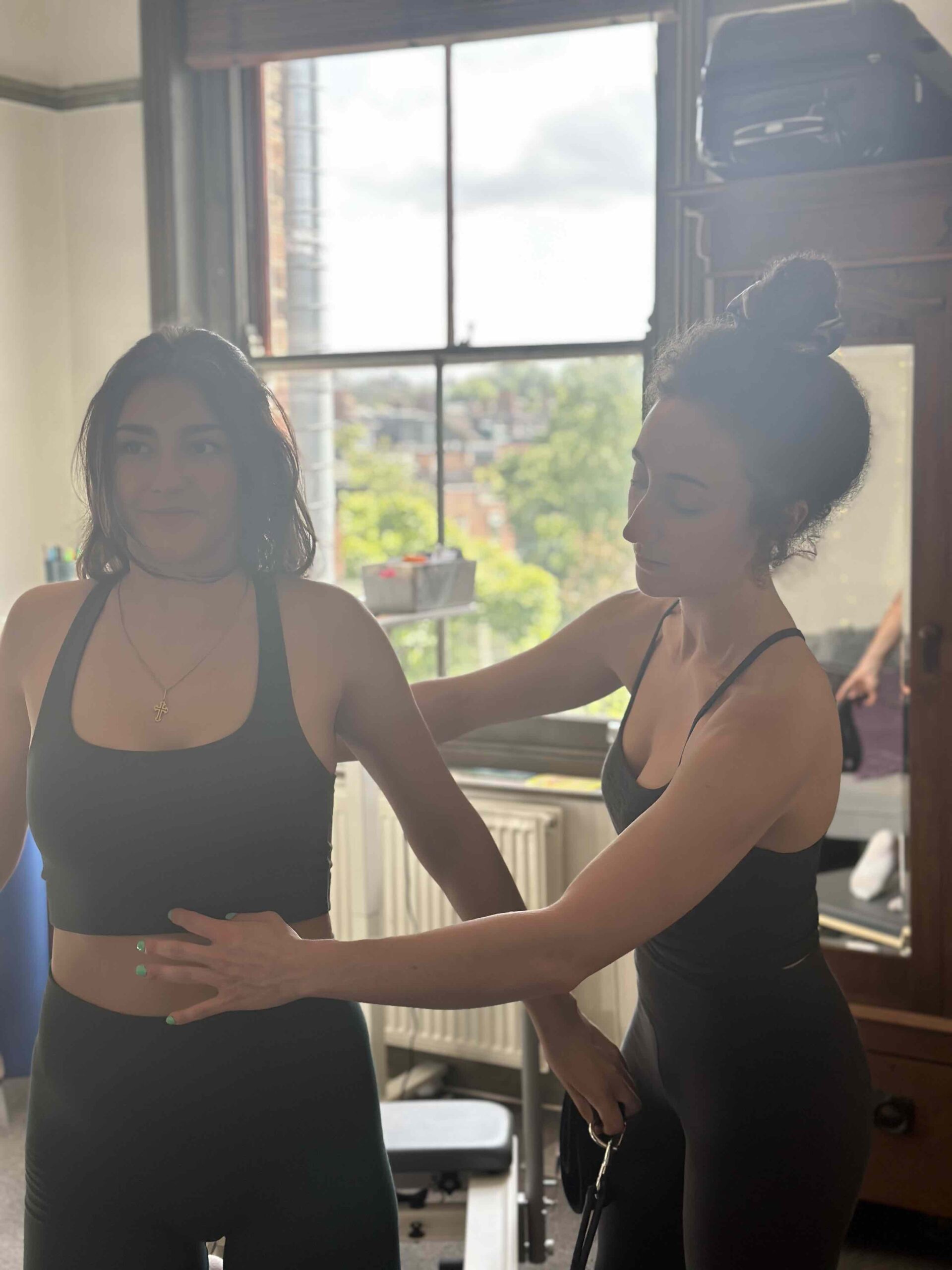Pilates for Hypermobility
Hypermobility is a condition of the joints that affects more people than the majority of the population realizes. Several of my Pilates clients have been somewhat unaware of their hypermobility until I drew attention to it within our sessions and explained the range of motion that each joint is ideally designed to move through.
If you are reading this thinking you or a loved one might have hypermobility, you are in the right place! I like to explain Pilates as the art and science of optimally mobilizing, stabilizing, and strengthening every joint and muscle in your body (hypermobile or not ;)).
In this blog, I’ll answer some of the most commonly answered questions that come my way about hypermobility, how Pilates is designed to help, and how you can optimize your Pilates practice if you happen to be a hypermobile mover.
Blog Guide
- What is hypermobility?
- What are the symptoms of joint hypermobility? Is hypermobility a chronic illness?
- What not to do with hypermobility?
- How can Pilates help with hypermobility?
- What are some key takeaways for doing Pilates with hypermobility?
What is hypermobility?
Hypermobility is a joint condition where some or all of a person’s joints move excessively, past a “normal” range of motion.
What are the symptoms of joint hypermobility? Is hypermobility a chronic illness?
You might be hypermobile if you can straighten your elbows past a neutral position, extend your pinky fingers away from you past 90 degrees, or straighten your legs with your hands on the floor. These signs are outlined in more detail by the Beighton Score at the Cleveland Clinic.
More signs and symptoms are outlined here.
While hypermobility itself is not known as a chronic illness, it is associated with conditions such as hypermobile Ehlers- Danlos Syndrome, which is a connective tissue disorder that can result in joint pain (clicking), easily bruised skin, extreme fatigue, and very unstable joints.
Nonetheless, regardless of whether or not you have EDS, hypermobility alone can easily lead to a variety of different injuries and joint pain due to the lack of control and potential weakness in the surrounding muscles of your joints.
Illness is a pretty extreme word, so I’d steer clear of labeling yourself with an illness due to your joints and how they move. Hypermoblity is more so a chronic joint condition that might be coupled with other aspects of your health, such as EDS.
What not to do with hypermobility?
If you have hypermobility, I advise that you avoid passively hanging out in the end range of your joints for extended periods of time. If you have hypermobility in your knees, for example, I’d advise you to micro-bend your knees if you will be standing for prolonged periods of time.
Less is more the majority of the time when we are fine-tuning strength and control in the muscles around our joints.
If you are working out in a traditional gym setting, restrain yourself from putting uncontrolled load (weight) and force into your fully extended joint range. For example, if you are doing squats, when you stand up try to keep your spine neutral, instead of swayed forward, and your knees microbent instead of locking out and hyperextending.
Likewise, if you are working on your upper body, restrain yourself from throwing your body into excessive elbow hyperextension during a tricep kickback or shoulder hyperextension (reaching your arms excessively far behind you) when doing a lat pull down.
How can Pilates help with hypermobility?
Pilates is widely known for helping with hypermobility. By functionally strengthening the muscles and tendons around each joint, Pilates can help a hypermobile person establish more control, and sustain motion around each joint. This makes it so you don’t “dump into” your joint’s end range, and lock-out, as explained above.
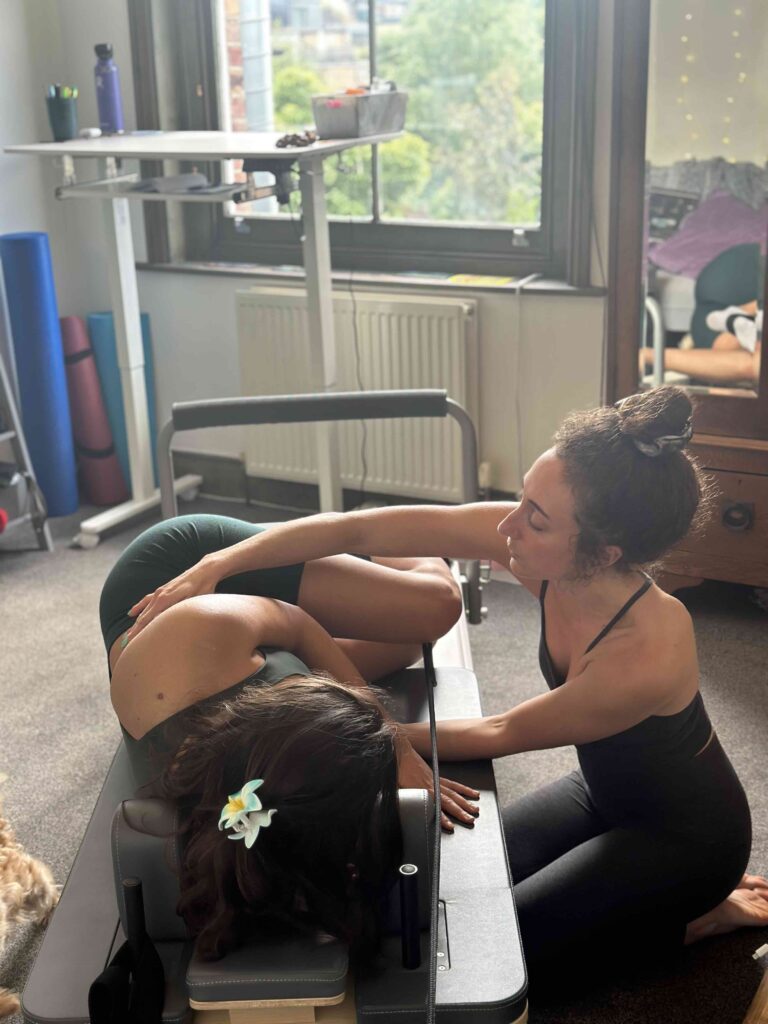
Pilates is also known to be massively beneficial in helping improve proprioception for all people (not just those who are hypermobile!)
Proprioception is your awareness of your body in space. Those who have hypermobility tend to have a lot less proprioception because of the fact that less proprioceptors inhabit your muscles and tendons (connects muscles to bones), and ligaments (connects bone to bone).
On a nerdy note, proprioceptors include cells called mechanoreceptors, golgi tendon organs, and muscle spindle fibers. By functionally strengthening your body through Pilates, you will slowly work to increase your body’s deposit of these proprioceptors, therefore, increasing your awareness of your body in space.
When you have a greater awareness of your body in space, you will be less likely to lock out into your hyperextension and will see improvements in your balance.
A well-trained Pilates instructor will help you identify how to work on your inner-mid range of your joint before you go closer to your joint’s hyperextended end of range. It is well worth visiting a local Pilates studio to seek out expert coaching such as this if you have the means.
What are some key takeaways for doing Pilates with hypermobility?
When doing Pilates as a hypermobile mover, props and resistance are your best friend. Why? Because adding resistance gives your hypermobile joints feedback on where your body is in space, and helps you better understand how to find your inner-mid range, instead of dumping into your end range.
For a mat Pilates practice at home, I always advise my clients to keep a theraband on hand. You can use a theraband as an add-on for side lying series to work on strengthening your hips and glutes, and for virtually any arm exercise so that you can strengthen the muscles surrounding your shoulder girdle and elbows.
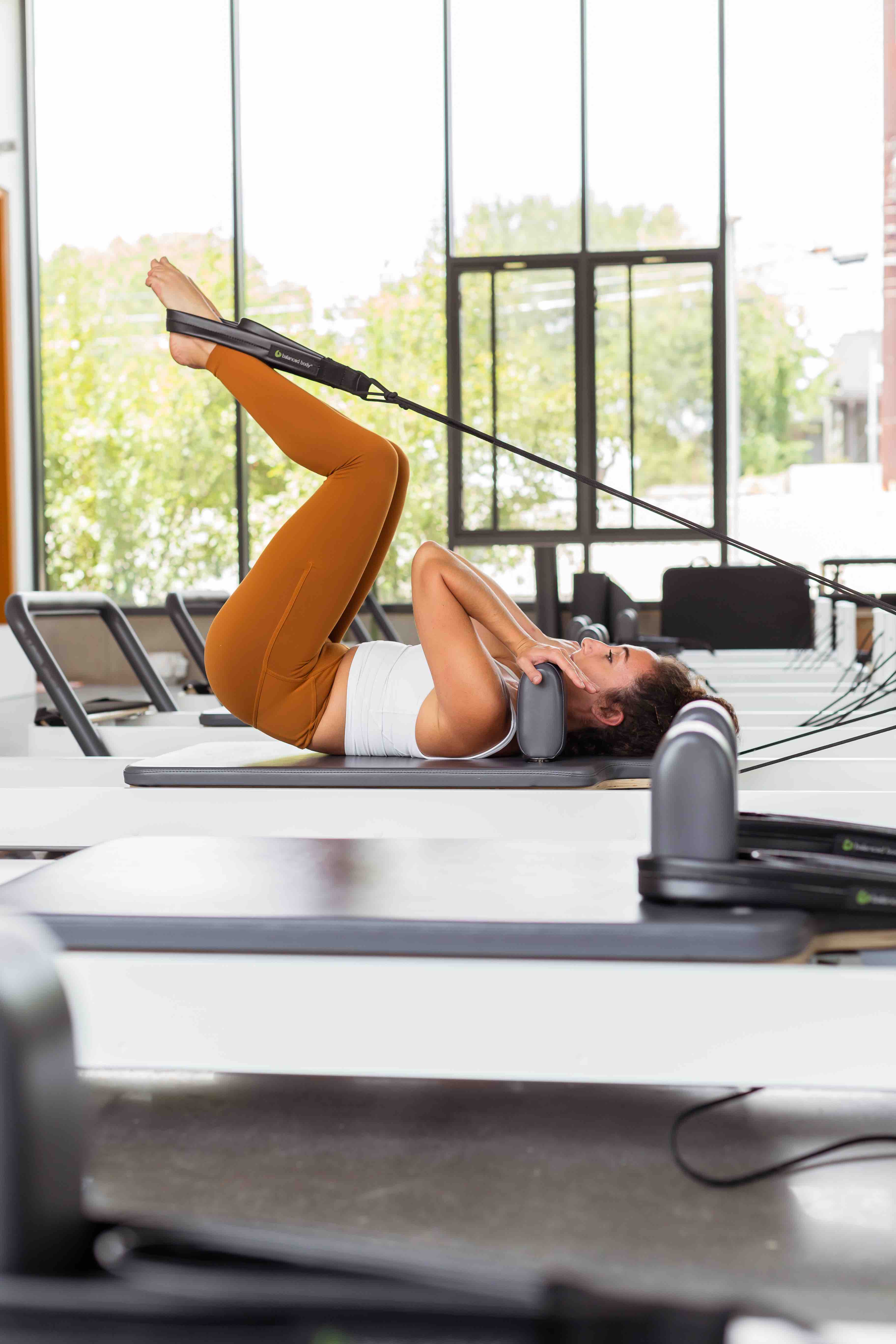
If you need some ideas, for non-specific (to hypermobility) mat Pilates, you are welcome to join my Patreon channel where over 25 videos are available on demand. This channel also includes 1 livestream Pilates class a month. Learn more here.

Pilates for Aerialists: My Research on Deep Abdominal Engagement in Circus Artists
2024 has been an exciting and challenging year for so many reasons! One of these reasons points to the original EMG (electromyography) research I conducted on the effect of Pilates on deep abdominal recruitment in circus artists. After spending months…
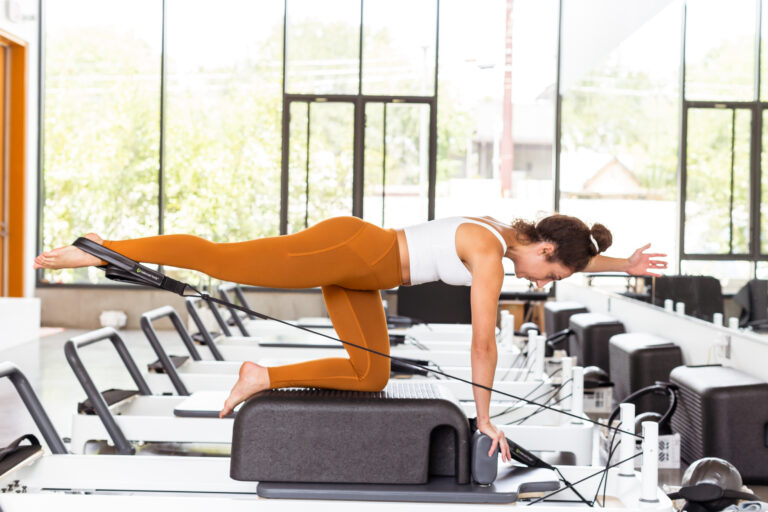
Pilates for Pelvic Floor Health
It is to my delight that talking about your pelvic floor health is becoming more popular in really any setting. Even though we can’t physically see our pelvic floors, it holds so much importance from functional strength, to urinary and…
Pilates Body Hack: Pilates for Happy Hips
One of the first things I notice as a Pilates instructor when one of my clients lays down on the reformer for their first exercise is the natural balance of their hips in relation to their legs, low back and…
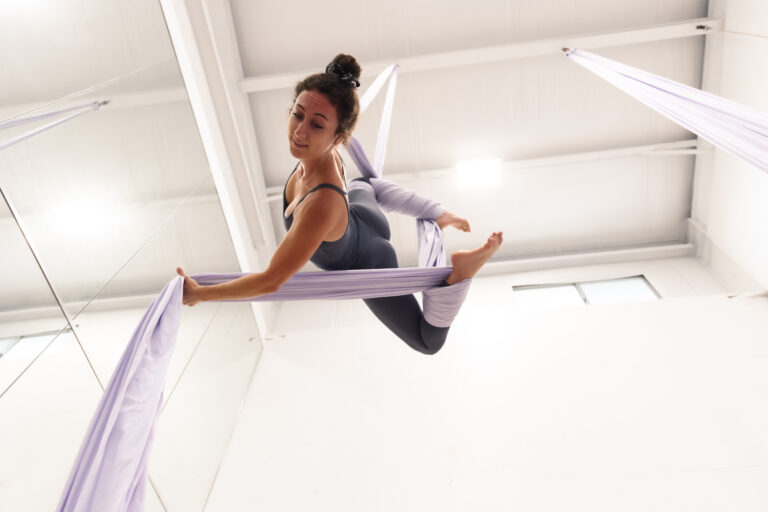
My Favorite Athletic Wear for Aerial Silks
Finding comfortable and supportive material to move in in the air can be a challenge! This blog takes you through my 5 favorite brands that I wear during my aerial silks practice. In addition to being popular, cute choices, these…

Best Pet-Friendly Hotels in London: Where to Stay While Away with Your Pet
Finding pet-friendly housing anywhere in the world can be a challenge. Sheila and I spent a significant period of time in London last year, knowing that we would want to return this year (yay!). Some of that time was spent…
Pilates Body Hack: Pilates for Low Back Pain
Low back pain is an extremely complex issue that many people experience at least once, if not several times in one lifetime. This blog speaks to my personal experience and thorough research of my own back injury (in short, a…
